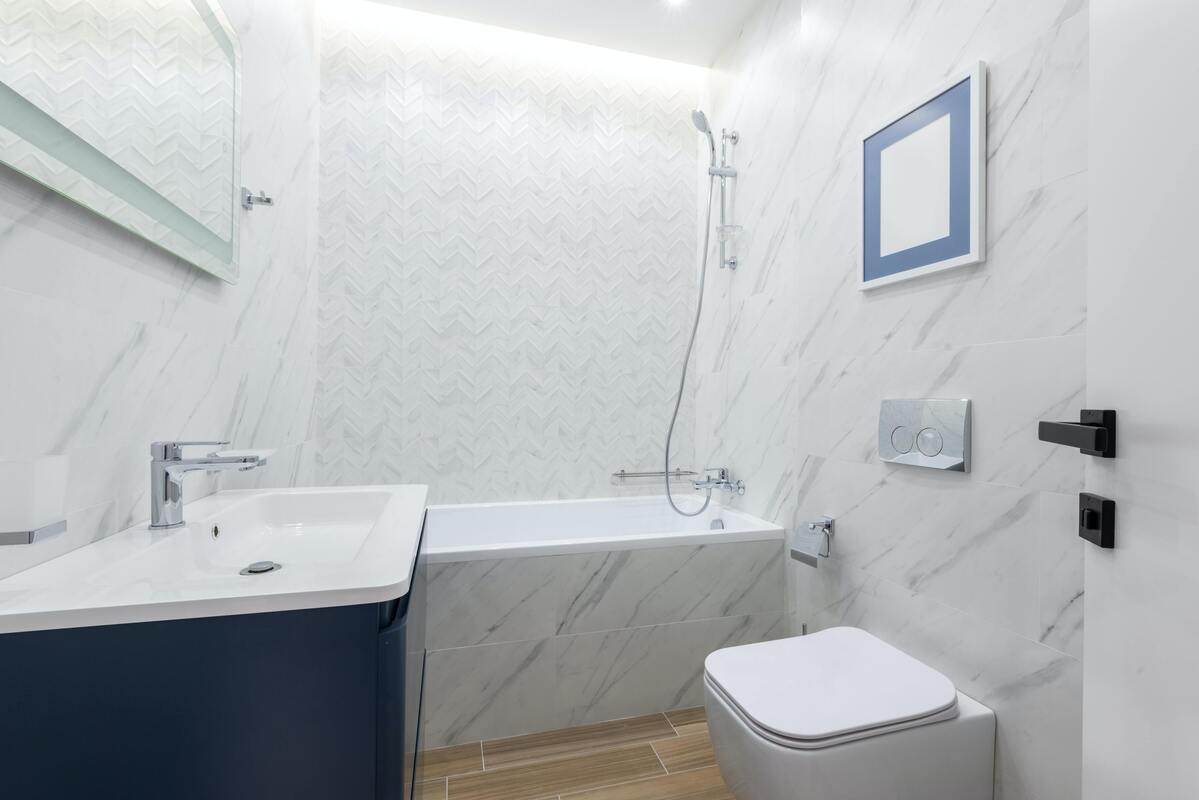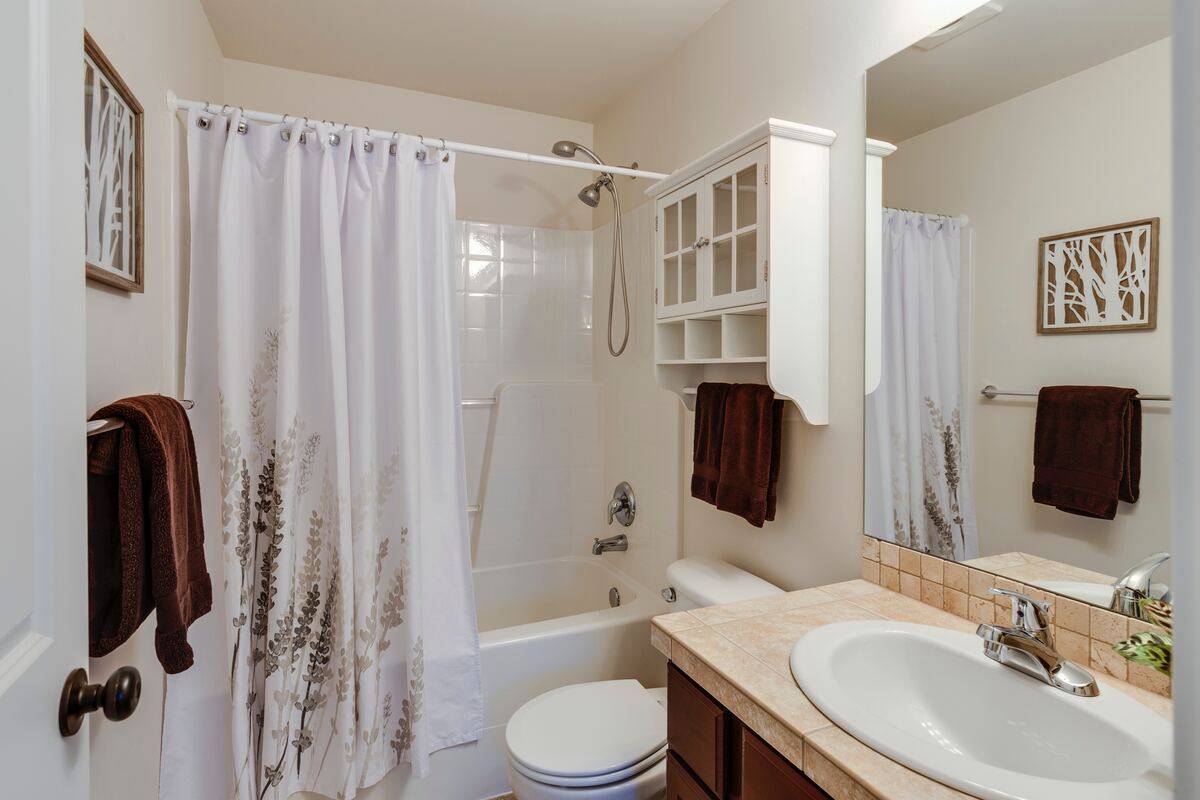Getting Rid Of Bathroom Mould: How To Do It

If you’re wondering how to get rid of mould in a bathroom, we can share some advice.
As explained by the NHS, excess moisture causes mould. Therefore it’s no surprise that out of all the rooms in your home, you’re most likely to see mould in the bathroom.
However, anywhere where rain is seeping in, or where there’s a leaky pipe, could also start seeing a buildup of mould after a while.
The problem is, mould can be very dangerous. It can cause allergies, respiratory infections and asthma.
Did you know that according to the World Health Organisation, asthma affected 262 million people – more than 3% of the global population – in 2019. Mould is a factor increasing the risks and another report estimates that 400 million people could have asthma by 2025.
In short, when you see mould, it’s best to get rid of it quickly and safely.
Before we start, when thinking about how to get rid of mould in the bathroom, always take care. Make sure the area is ventilated, wear a face mask, put on protective glasses and keep rubber gloves on throughout.
If you’re in any doubt about what you’re doing, seek further advice and don’t take any risks. Only remove mould caused by condensation, not contaminated water or sewage – and hire a professional if you’re not sure how to proceed.
How to get rid of mould in your bathroom
Here are three main ways how to get rid of mould in a bathroom:
- White vinegar: This is the non-toxic option. Mix vinegar with water and pour directly onto the mould, or you could put it in a spray bottle and use it that way. Leave to dry and then wipe or scrub away.
- Bleach: This is the toxic option, so be careful. Only add a small amount of bleach to water and rinse it away thoroughly afterwards.
- Borax: The natural option. Available in hardware stores and some supermarkets, sodium borate is many cleaning pros’ choice. Use it mixed with water, but you don’t have to rinse afterwards – leaving it there can help prevent mould building up again.
The area above your shower is the most likely to attract mould, due to the wet and humid conditions providing a perfect breeding ground for it.
To get rid of mould in the bathroom ceiling, you should be able to use the same cleaning solution methods as above, just be careful. Try not to use too much of your solution, to prevent it dripping down and landing on you!
How to get rid of mould in bathroom sealant
Mould – especially black mould – tends to be trickier to remove when it has formed within some sealant, between your shower and bathroom tiling for example.
However, first try your chosen mould removal method from above to see if that works – and scrub hard. If it doesn’t come off, use an old toothbrush to really get into corners.
If you still don’t have any luck, it’s probably going to be a case of having to remove the old sealant and replacing it.
To do this, use a screwdriver or something similar to chisel away the old sealant, taking the mould away with it.
Then, apply some new sealant and from this point on, clean it regularly to prevent more mould from building up again in the future.
Mould prevention
Common ways to remove bathroom mould include:
- Wiping smooth surfaces: Keeping your shower or bathtub as dry as possible after using it will stop moisture from causing mould to form.
- Using extractor fans: These help bathrooms stay damp-free after you have had a bath or a shower.
In general, keep your bathroom ventilated and hang wet towels up so that they’ll dry quicker.
You could also consider using anti-mould paint on the bathroom walls. It’s a substance that will stop mould growth in its tracks!
Final thoughts: How to get rid of mould in your bathroom
We hope this guide has helped you learn all about how to get rid of mould in any bathroom.
Lastly, if you have a shower curtain, wash it regularly. It catches condensation and when moisture settles too long, mould spores tend to build up over time.
Put your shower curtain in your clothes washing machine or clean it manually in a bucket – using warm water and detergent, plus either vinegar, baking soda or bleach. Then dry it.
To help keep your bathroom mould-free, a longer-term solution is to take away the shower curtain for good. A better and easier to clean option is shower glass.
Why not think about replacing your bath with a shower? Or, why not consider converting your traditional bathroom into a more modern wet room?
We’re Ability Bathe Bathrooms, experts in bathroom refurbishments and new installations, which are all covered by our 10-year guarantee. We operate in Devon, Cornwall, Weston-Super-Mare and surrounds.
We provide a friendly and family-run service, backed by more than 35 years’ experience. Please get in touch to find out how we can help you.





